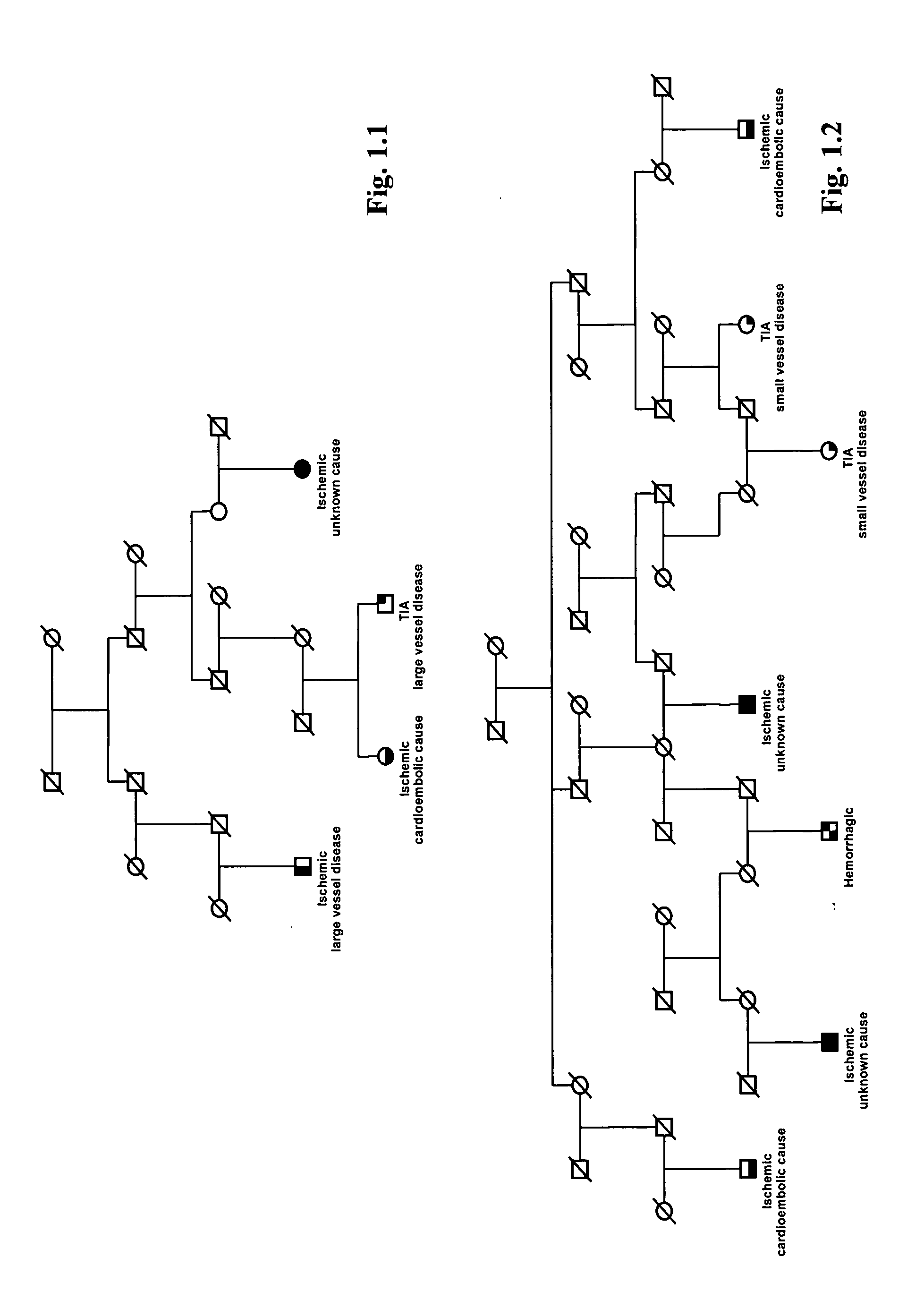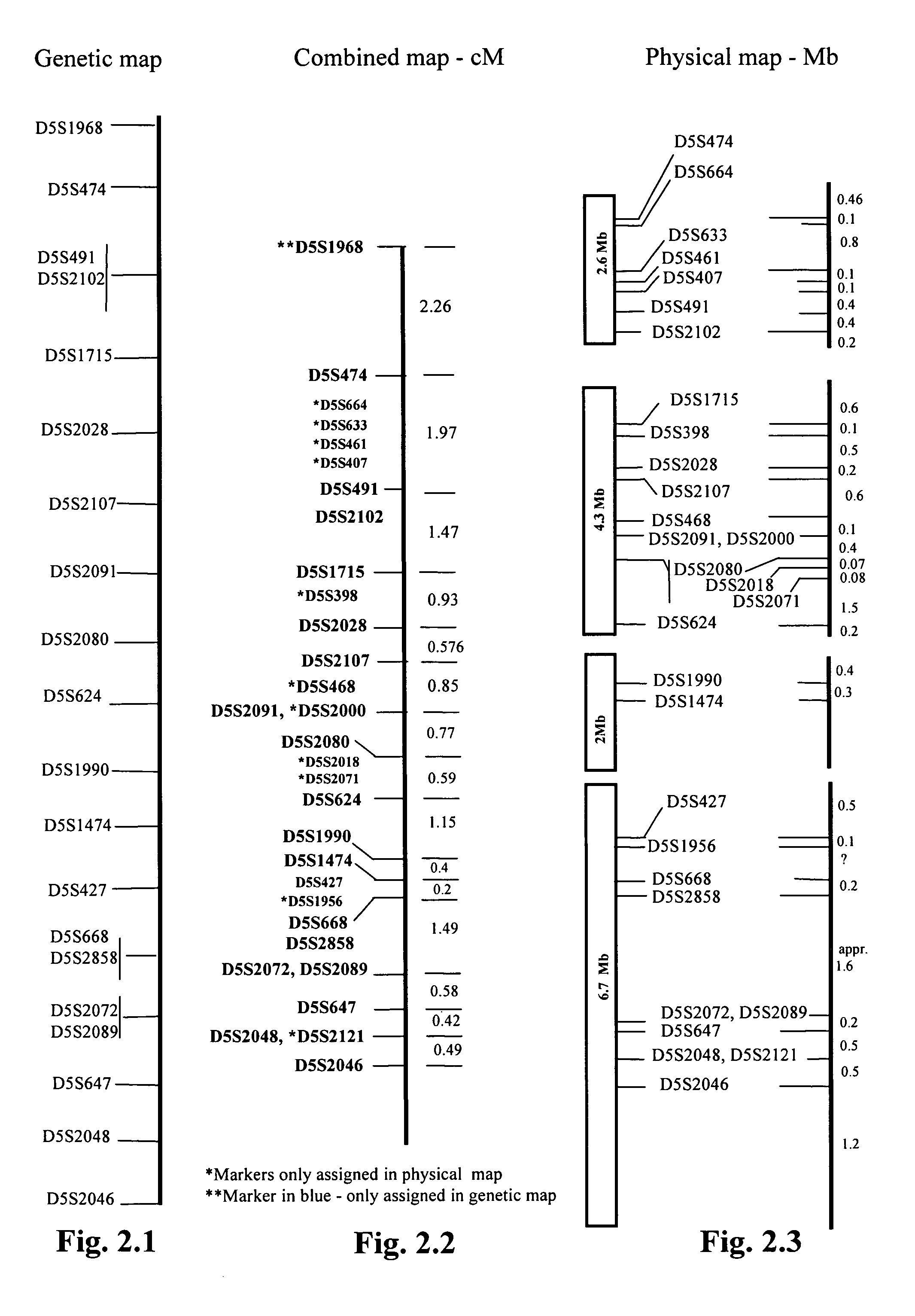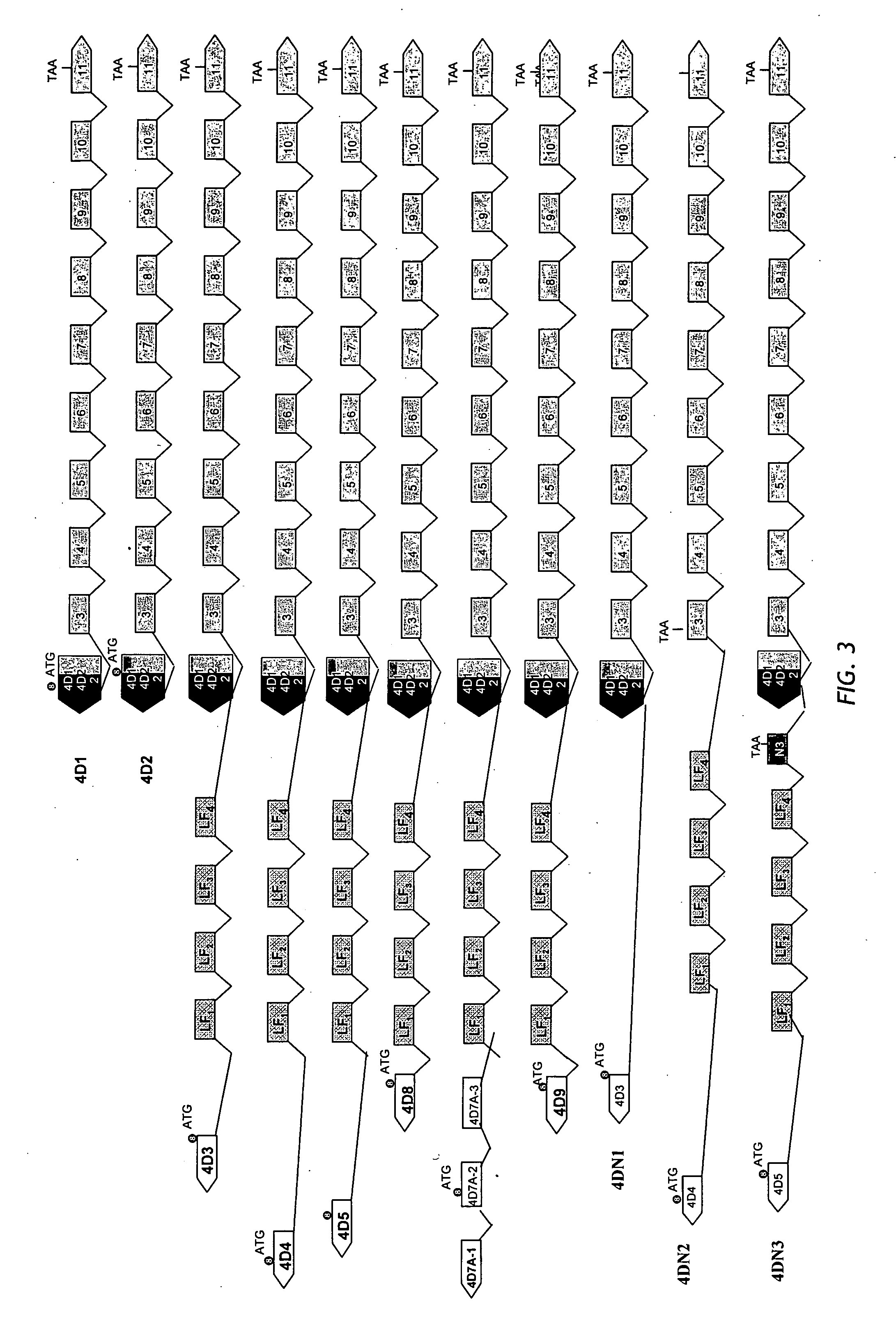Susceptibility gene for human stroke; methods of treatment
- Summary
- Abstract
- Description
- Claims
- Application Information
AI Technical Summary
Benefits of technology
Problems solved by technology
Method used
Image
Examples
example 1
PDE4D Variations and Haplotypes Increase Risk for Stroke
Icelandic Stroke Patients and Phenotype Characterization
[0193] A population-based list containing 2543 Icelandic stroke patients, diagnosed from 1993 through 1997, was derived from two major hospitals in Iceland and the Icelandic Heart Association (the study was approved by the Icelandic Data Protection Commission of Iceland and the National Bioethics Committee). Patients with hemorrhagic stroke represented 6% of all patients (patients with the Icelandic type of hereditary cerebral hemorrhage with amyloidosis and patients with subarachnoid hemorrhage were excluded). Ischemic stroke accounted for 67% of the total patients and TIAs 27%. The distribution of stroke suptypes in this study is similar to that reported in other Caucasian populations (Mohr, J. P., et al., Neurology, 28:754-762 (1978); L. R. Caplan, In Stroke, A Clinical Approach (Butterworth-Heinemann, Stoneham, Mass., ed 3, (1993)).
[0194] The list of approximately ...
example 2
Sequencing and Characterization of the Human Gene and its RNA / Protein Isoforms
Sequence of the Stroke Gene Region
[0242] At the start of our work, there was little genomic sequence available in the public domain covering the stroke gene region. Therefore, we sequenced approximately 3 Mb of the area defined by one drop in lod. The locus on 5q12 indicated in the genome wide scan was physically mapped using bacterial artificial chromosomes (BACs). A set of overlapping clones for a 20 cM region was assembled through a combination of hybridization and BAC-fingerprint walking. Eighteen BACs (bacterial artificial clones) (RP11-164A5, RP11-188115, RP11-313P15, RP11-631M6, RP11-103A15, RP11-489L13, RP11-621C19, RP11-113C1, RP11-567M18, RP11-412M9, RP11-15G2, RP11-15F7, RP11-281M3, RP11-421L6, RP11-1A7, RP11-68E13, RP11-379P8, and RP11-422K3) covering the minimum tiling path of the one LOD interval were analysed using shotgun cloning and sequencing. Dye terminator (ABI PRISM BigDye) chemistr...
example 3
PDE4D Isoform Expression
Expression Analysis in EBV Transformed B Cell Lines
[0289] As a functional mutation in the known coding exons of PDE4D was not identified, gene expression was next studied to determine if the genetic association to stroke relates to regulation of its expression levels. In order to test this, we chose to use cell lines instead of blood or tissues for these studies because expression analysis of cell lines is not confounded by the presence of multiple cell types. Cell types may express PDE4D at different levels so it is generally more reliable to quantify expression in cell lines than tissues. Isoform-specific kinetic PCR analysis was carried out on EBV transformed B cell lines to quantify each isoform in 83 stroke patients and 84 controls. These patients were not selected for this analysis based on any specific subtype of stroke. The majority of the patients had ischemic stroke and 38% of them had carotid or cardiogenic cause of stroke. Overall the total PDE...
PUM
| Property | Measurement | Unit |
|---|---|---|
| Fraction | aaaaa | aaaaa |
| Fraction | aaaaa | aaaaa |
| Fraction | aaaaa | aaaaa |
Abstract
Description
Claims
Application Information
 Login to View More
Login to View More - R&D
- Intellectual Property
- Life Sciences
- Materials
- Tech Scout
- Unparalleled Data Quality
- Higher Quality Content
- 60% Fewer Hallucinations
Browse by: Latest US Patents, China's latest patents, Technical Efficacy Thesaurus, Application Domain, Technology Topic, Popular Technical Reports.
© 2025 PatSnap. All rights reserved.Legal|Privacy policy|Modern Slavery Act Transparency Statement|Sitemap|About US| Contact US: help@patsnap.com



